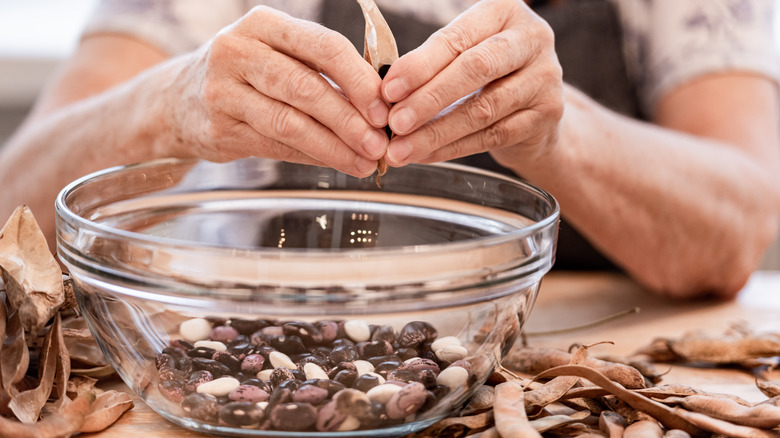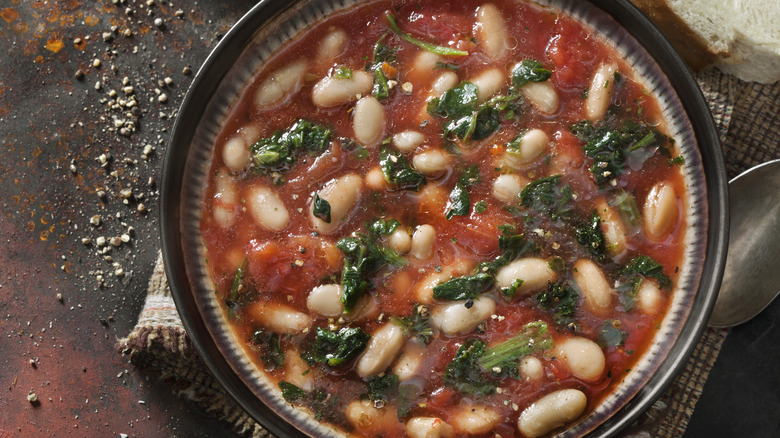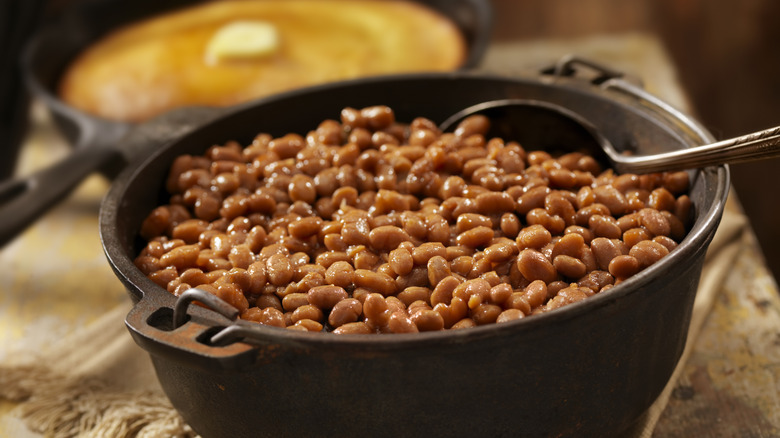The Ingredient Tip You Need For The Best Cooked Dried Beans
Alongside their gloriously attractive nutritional composition, beans are a great way to inject texture, flavor, and bulk into a multitude of savory and sweet dishes. When it comes to cooking, dried beans are a favorable option in terms of affordability and taste. But are you preparing them to the best of their abilities? With a simple lesson on acidity, your legumes could reach texture perfection.
It's recommended when cooking dried beans that any acidity, such as tomatoes or lemon juice, is added later in the bean preparation. Hypothetically speaking, if you attempt to cook them in a tomato-based sauce, like chili con carne, you may find that the beans have not softened even after an hour of boiling. This is due to the acidity level in the tomatoes toughening their skin. This naturally lengthens the softening process, if it occurs at all. Which is why it's critical to add acidic components at the right time.
When to add acidity to dried beans
The skin of a dried bean contains large molecules called pectin. This pectin coating on its exterior needs to be broken down to reach that tender buttery-filled state. Boiling the beans in water allows this molecule barrier to break down and for them to soften. Unfortunately, acidity can strengthen the pectin fortress, preventing the legumes from reaching a glorious al dente form.
Whether it's in the form of wine, chili sauce, molasses, vinegar, tomatoes, citric acid, or juice, introducing acid to your beans must be conducted with caution, even if it's a small teaspoon. Exercise patience until they have shaken off their pectin coats before marrying the two ingredients together.
It should also be noted that, when boiling on a stove, different versions can vary in how long they take to reach a tender state. Great Northern beans can take as little as 45 minutes, pinto beans can take as long as two hours, and large Lima beans can sometimes take a whopping three hours to tenderize. So be realistic and factor this softening time in when preparing them.
How to speed up the softening process of dried beans
Speeding up the tenderization of beans can be achieved through various methods. Soaking beans before preparation may reduce the tenderizing time, even if by 10 minutes. Incorporating baking soda into boiling dried beans can also speed up the softening process, as the sodium ions present within the soda can weaken the pectin. This is a helpful tip if you're cooking beans in a hurry and want to mix acidity in pronto.
If you think you've reached the tender mark, it's important to taste test at least five beans to ensure they all exhibit the same texture. If you're satisfied that your legumes are almost ready, then it's time to add any acidity you desire. Whether that's a tablespoon of vinegar in a comforting bowl of baked beans or a squeeze of fresh lemon in a white bean soup.
It's also important to remember that while their shelf-life feels almost limitless, most dried varieties will only last two years. While you can follow all the dried bean tricks in the book, if they are old, you may struggle to soften them at all. So, just keep in mind these simple tips and you'll be on your way to a dish with a shorter preparation time that's all the more satisfyingly delicious.


